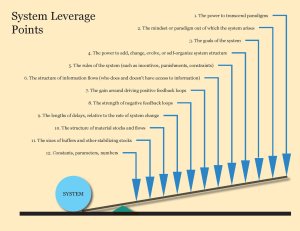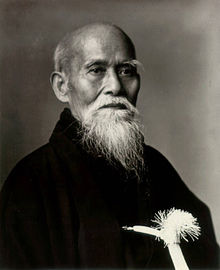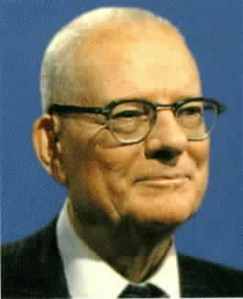Ending Therapy
Plan for the Ending
Any therapy relationship is likely to end, sooner or later. Sometimes it’ll be a happy ending, sometime less so. Although the seeds planted during therapy often means the client can continue to grow and develop, becoming more whole, more congruent, in their own time and under their own tutelage.
There are many reasons clients decide to end therapy. Sometimes they’ve reached their goals. Sometimes they need a break. Sometimes the connection with their therapist isn’t there. Sometimes they notice a red flag. Sometimes they’re about to face a new fear or realise a new insight.
Whatever the reason, it’s vital the therapist and the client brings it up as soon as either party becomes conscious of it. Wanting to end therapy is a critical topic to explore. And it could be as simple either the client or the therapist saying “I feel like it might be time to end therapy, I wonder what that’s all about?”.
An end in therapy can be more like a bittersweet parting than a sad, abrupt, or complicated loss. Ideally, clients can have a satisfying closure to therapy that will help them end other relationships well in the future.
Processing negative feelings can be a way to work through maladaptive patterns and make the therapeutic relationship a corrective experience. If clients avoid this conversation by simply discontinuing therapy, they may miss the opportunity for a deeper level of healing resulting from their therapy.
I find it helpful to mention the ending even from the outset of the therapy relationship. If only in the information conveyed as part of the setup of that relationship.
Any particular client may find it a distraction, discomforting, or scary to entertain the idea that the relationship – or, at least, the therapy – might come to an end even as it’s just getting started. So the timing of the broaching of the subject generally depends on how things are going.
Advice for Clients re: Ending Therapy
Examine your reasons
A positive approach to ending therapy is to delve into the possible reasons why you’d like to leave. Is it because you feel disrespected, stuck or incompatible or because of feelings of discomfort in dealing with certain things that the therapist is pushing on me on? It’s common and part of the process of changing problematic patterns, to feel triggered and even angry with your therapist.
Don’t stop suddenly
It’s important for clients to discuss the ending with their therapists, because they may suspect that the desire to part ways is somehow premature. Even if a client decides to leave therapy, processing this can be therapeutic in itself. Some sessions discussing the subject, including feelings and what kinds of post-therapy experiences the client might go through can help ease the guilt, regret or sadness that often arise.
Plus, honouring the relationship and the work everyone has done together, with some sessions to achieve closure in a positive way can be a very powerful experience in its own right.
Talk in person
Avoid ending therapy with a text, email or voicemail. Speaking directly is an opportunity to practice assertive communication and perhaps also conflict resolution, making it is an opportunity for learning and growth.
Provide honest feedback
If you feel comfortable and emotionally safe doing so, it is best to be direct and honest with your therapist about how you are feeling about him or her, the therapeutic relationship or the approach you’ve been experiencing. After all, this has been a partnership, and part of growth is to embrace that, see the therapist as a human being, and see other folks’ needs met – including the therapist.
When offering feedback, do so without judgment. After all, the therapist will be working with other organisations and your thoughts may change their style and help them to better serve their clients in the future.
A good therapist will be open to feedback and will use it to continually improve.
Communicate clearly
Be as direct, open, and clear as possible. Articulate the exact reasons for wanting to end therapy.
Be ready for dissent
It is not unusual for a therapist to agree with ending therapy, especially if the client has reached their goals and is doing well. But they also might disagree. This disagreement can serve positively, as a spur to enhance the ability for discussing difficult topics.
Every therapy ends, there’s no reason to avoid this reality. Early in therapy, when discussing goals, why not talk about how and when therapy might end.
Advice for Therapists re: Ending Therapy
Invite feedback
Most personal therapists note that having their clients share feedback on their experiences is incredibly valuable. It’s no different in the OP context. Feedback helps therapist improve and grow as practitioners.
Sometimes we won’t know why
Sometime we won’t get to know why a client ends their therapy. The connection can just fizzle out, with little to no contact or explanation. As we’re very invested in our work and in our relationship with the client, such an ending can be both a puzzle and a disappointment.
Practice letting go
Some clients simply stop, so it’s not easy to know if they’re just ‘done’ with therapy or if we’ve done something to make them want to leave. When this is the case, I just let it go. It’s their issue, not mine, and I don’t need to worry over it when I don’t know the reasons behind it. Of course we could wish it were otherwise, but letting go can be the hardest thing.
Enjoy the experience
When client and therapist are able to have some sessions for proper closure, it becomes a great opportunity to reflect on their work together. These sessions can be highly joyful, for both parties.
Our goal is to support our clients in confronting life and the issues they see as holding them back, blocking them from greater success. If clients have clear reasons to end therapy and we’ve had the time to talk about it and tie up the loose ends, ending therapy is a great time to reflect on our work, invite the client to talk about their future, and discuss what has been accomplished and what hasn’t. We can leave with a sense of closure, without nagging, unresolved issues. And with the sense that the client is now netter placed to tackle themselves new issues that might arise in their future.
Those precious final sessions afford the opportunity to relax, reminisce about our shared experiences, ponder the future, and learn how to be a better therapist for others.
When clients can approach the ending of therapy with respect, dignity and integrity, that sets the tone for other relationship issues. In other words, with proper closure, everybody wins.
In your practice, how often do you plan for the ending?
– Bob



